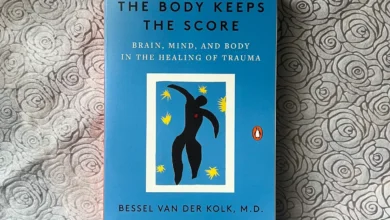
"I Hate You—Don't Leave Me: Understanding the Borderline Personality" by Jerold J. Kreisman and Hal Straus
Table of Contents
Introduction
Borderline Personality Disorder is one of the most misunderstood mental-health conditions, which involves emotional instability, impulsive behaviour, and turbulent relationships. “I Hate You—Don’t Leave Me: Understanding the Borderline Personality” by Jerold J. Kreisman and Hal Straus is probably one of the most well-explained books that would assist in the minutiae so that sufferers and their loved ones can arrive at in-depth understanding about the order. The article reviews the book, focusing on major themes and illuminations of this book and also gives guidance which is practical.
Overview of the Book
First published in 1989, with a revision in 2010, “I Hate You—Don’t Leave Me” also belongs to the foundational literature on BPD. It integrates expertise gained from clinical practice with actual case studies that flesh out the understanding of BPD. Kreisman, a psychiatrist, together with Straus, a medical writer, tried to define in comprehensible terms what the disorder is; therefore, it will be required reading both for professionals and laymen.
- The Nature of BPD
The book starts with the definition of BPD and descriptions of the diagnostic criteria for its identification. According to the authors, it is a pervasive pattern of instability in interpersonal relationships, self-image, and affects, plus marked impulsivity. People who have BPD find themselves in an emotional whirlwind because they may idealize one moment and devaluate another, hence creating very intense and unstable relationships. - The Emotional Roller Coaster
Most of the book discusses the emotional volatility that characterizes BPD. The authors underline how BPD patients “feel” their emotions more and for longer periods compared to normal people. It is this emotional hypersensitivity that fuels impulsive actions and self-destruction in the form of self-mutilation or substance abuse. - Fear of Abandonment
One of the central characteristics of BPD is overwhelming fear of abandonment. The authors pick up how this fear of abandonment fuels most of the behaviours presented in BPD, such as frantic efforts to avoid real or imagined abandonment. In such a case, this feeling of fear may result in paradoxical behaviour whereby a person with BPD will push others away so as to pre-empt feelings of rejection. - Identity Disturbance
Kreisman and Straus also discuss identity disturbance, another of the characteristics or hallmarks of BPD. Many with BPD have difficulties with an integrated and stable sense of self, leading them to frequently change values, goals, and even career orientation. In this way, a lack of stable identity may further add to instability in all aspects of living for those diagnosed with BPD. - Splitting
The authors elaborate on the concept of splitting, also referred to as black-and-white thinking. This concept describes how a person with BPD views people or situations as good or bad, and as a result, their relationships see extreme swings, with very intense emotional responses to these swings. Cognitive distortion of this nature is one of the chief promoters of such altercations.
Practical Advice and Coping Strategies
- Therapy and Treatment Options
One of the key ideas insisted upon by the book is that therapy—especially Dialectical Behavior Therapy—is an important factor in managing BPD. DBT was designed specifically for patients with BPD and was developed to teach skills in mindfulness, distress tolerance, emotion regulation, and interpersonal effectiveness by Marsha Linehan. The authors have also drawn on cognitive-behavioral, hashbacks, and psychodynamic therapy traditions. - Medication
Although no medication is particularly approved for BPD, the authors note that several medications do have great potential in helping with specific symptoms—for instance, mood stabilizers to help in emotional instability, or on a more severe note, antipsychotics when patients have intense dissociation or paranoia. Of course, all of this must be done very carefully and working person-to-person with a psychiatrist in order to arrive at the appropriate dosage. - Self-Help Strategies
Kreisman and Straus offer readers a very practical approach to self-help techniques that people with BPD can use, including mindfulness measures to keep their feet in the present moment, journaling to keep track of feelings and what triggered them, and developmental strategies for forming an independent support network. They underline the significance of self-compassion and caring about oneself in managing BPD. - Support for Loved Ones
It also offers much useful advice for family members and friends with loved ones who have BPD. The setting of boundaries, maintenance of consistency, and seeking of support for themselves are some of the things authors suggest for them. In addition, by educating themselves about BPD, loved ones can understand better and be more empathetic to the challenge faced by the person with BPD.
Moment of Insight
One of the deepest insights contained in this book is captured in the following passage:
For those ill with Borderline Personality Disorder, life seems to always be a battleground of the two opposing forces: intense fear of abandonment against the overwhelming need for intimacy. It is in unstable relationships, impulsive actions, and mood swings that the inner struggle usually finds its expression. Thus, knowing and developing methods for dealing with the disorder becomes very important for patients, as well as their close ones.
This will forever be what BPD stands for—this tug-of-war between fear and need, back and forth, the emotional balancing act in the syndrome. It is not something that anyone can do alone. It clarifies the very foundation: compassionate understanding is the way toward recovery for any individual with BPD.
Conclusion
“I Hate You—Don’t Leave Me: Understanding the Borderline Personality” by Jerold J. Kreisman and Hal Straus is one of the landmark pieces that provides comprehensive coverage with compassion toward Borderline Personality Disorder. The authors integrate clinical insight with real case examples to offer just truly invaluable guidance to both individuals with BPD and their loved ones. The book became a must-read as one is able to understand the emotional volatility, fear of abandonment, identity disturbances, and splitting associated with the disorder and get practical advice on therapy, medication, and some hints toward self-help strategies from it.
Whether you’re a clinician or someone with BPD, and certainly a loved one searching for ways to help your person with their illness, “I Hate You—Don’t Leave Me” has much to offer in the way of knowledge and concrete tools with which to overcome the challenges of Borderline Personality Disorder.
Other related articles :
External sources :




